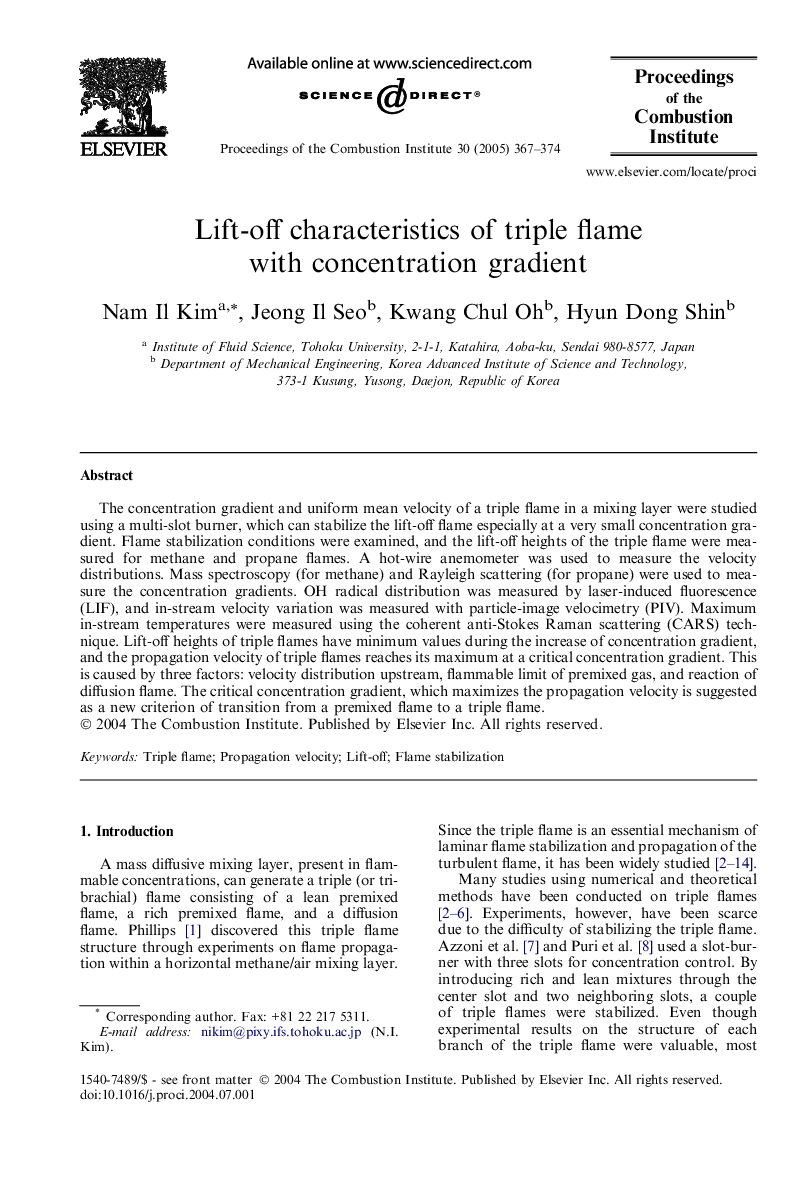| Article ID | Journal | Published Year | Pages | File Type |
|---|---|---|---|---|
| 9637355 | Proceedings of the Combustion Institute | 2005 | 8 Pages |
Abstract
The concentration gradient and uniform mean velocity of a triple flame in a mixing layer were studied using a multi-slot burner, which can stabilize the lift-off flame especially at a very small concentration gradient. Flame stabilization conditions were examined, and the lift-off heights of the triple flame were measured for methane and propane flames. A hot-wire anemometer was used to measure the velocity distributions. Mass spectroscopy (for methane) and Rayleigh scattering (for propane) were used to measure the concentration gradients. OH radical distribution was measured by laser-induced fluorescence (LIF), and in-stream velocity variation was measured with particle-image velocimetry (PIV). Maximum in-stream temperatures were measured using the coherent anti-Stokes Raman scattering (CARS) technique. Lift-off heights of triple flames have minimum values during the increase of concentration gradient, and the propagation velocity of triple flames reaches its maximum at a critical concentration gradient. This is caused by three factors: velocity distribution upstream, flammable limit of premixed gas, and reaction of diffusion flame. The critical concentration gradient, which maximizes the propagation velocity is suggested as a new criterion of transition from a premixed flame to a triple flame.
Related Topics
Physical Sciences and Engineering
Chemical Engineering
Chemical Engineering (General)
Authors
Nam Il Kim, Jeong Il Seo, Kwang Chul Oh, Hyun Dong Shin,
